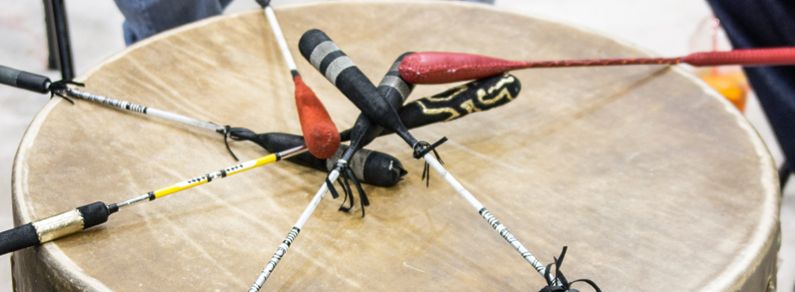Honoring Indigenous Voices: Suicide Surveillance from a Tribal Perspective
November 09, 2018

November is National Native American Heritage Month—a time to celebrate the many important contributions of indigenous people, including their distinct history, culture, and traditions. It is also a time to raise awareness about the unique challenges faced by Native communities and to highlight the many innovative strategies they use to address them.
In honor of this observance, SPRC is pleased to release the new report, Suicide Surveillance Strategies for American Indian and Alaska Native Communities. This report summarizes findings and recommendations from our exploration of suicide surveillance among American Indian and Alaska Native (AI/AN) communities across the country. If you are a prevention practitioner working in suicide surveillance, we invite you to learn more about the challenges specific to tribal populations and engage in conversations with Native communities in your area to come up with solutions. For those already working with AI/AN communities, we invite you to use the report’s strategies and resources to develop practical and culturally appropriate approaches to suicide surveillance that acknowledge the uniqueness of each community.
Many AI/AN communities have been impacted by suicide and are actively engaged in prevention efforts. However, some tribal communities have relatively low rates of suicide, and it is important to understand what protective factors may contribute to that. Because suicide rates vary among AI/AN populations and regions,1 gathering local data is key to understanding the unique circumstances surrounding suicidal behaviors in specific communities. Understanding the nature and extent of suicide’s impact on the community can guide strategic planning about the most effective ways to address it. Information about suicide deaths and attempts can help identify community needs so that limited resources can be carefully targeted. Over time, these data can help the community measure the impact of prevention efforts and make changes as needed.
SPRC’s new report represents a collective effort to better understand how AI/AN communities can gather suicide-related data to help plan and assess the effectiveness of their prevention efforts. It was developed with input from diverse tribal communities—including federally recognized tribes, tribal organizations, Alaska Native entities, and urban Indian organizations. By sharing their experiences developing suicide surveillance systems, these groups demonstrate that there is no one-size-fits-all approach because each tribe has its own unique history, culture, and tradition. They also show how surveillance systems vary across AI/AN settings, which range from urban areas to rural reservations. Suicide prevention practitioners in these settings present creative and culturally appropriate strategies for overcoming the challenges involved in collecting suicide data. They have found innovative ways to interpret, share, and use data to enhance their prevention efforts, while addressing culturally sensitive issues and maintaining respect for the unique culture and traditions of their communities.
Suicide data collection is a relatively new phenomenon in tribal communities. We hope that this report helps foster creative solutions to collecting suicide data and developing community-driven programs that are sustainable over time. Including tribal leaders and community members is essential to the success of these efforts, especially in building the capacity for tribes to collect suicide data in a way that honors their unique culture and history. We hope that this report can be a building block in that endeavor. This Native American Heritage Month, we encourage you to use and share the following resources to help prevent suicide among AI/AN communities:
- Suicide Surveillance Strategies for American Indian and Alaska Native Communities
- Surveillance Success Stories: White Mountain Apache Tribe
- Surveillance Success Stories: Fort Peck Indian Reservation
- Prevention Paradigm for Native Americans: A SPARK Talk by Doreen Bird
References
1. Chandler, M. J., & Lalonde, C. E. (2008). Cultural continuity as a moderator of suicide risk among Canada’s First Nations. In L. Kirmayer & G. Valaskakis (Eds.), Healing traditions: The mental health of Aboriginal peoples in Canada (pp. 221–248). Vancouver, CA: University of British Columbia Press.
